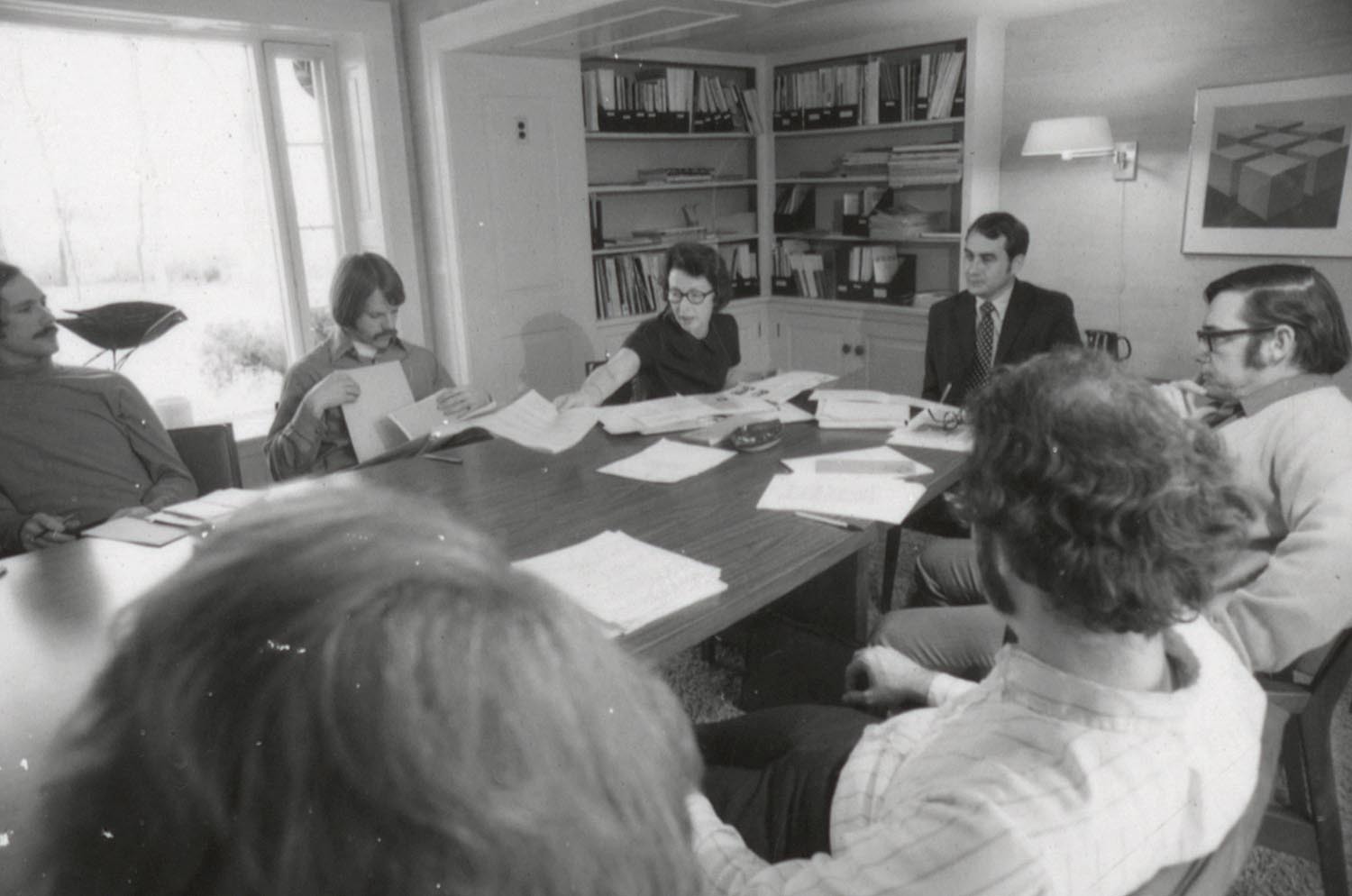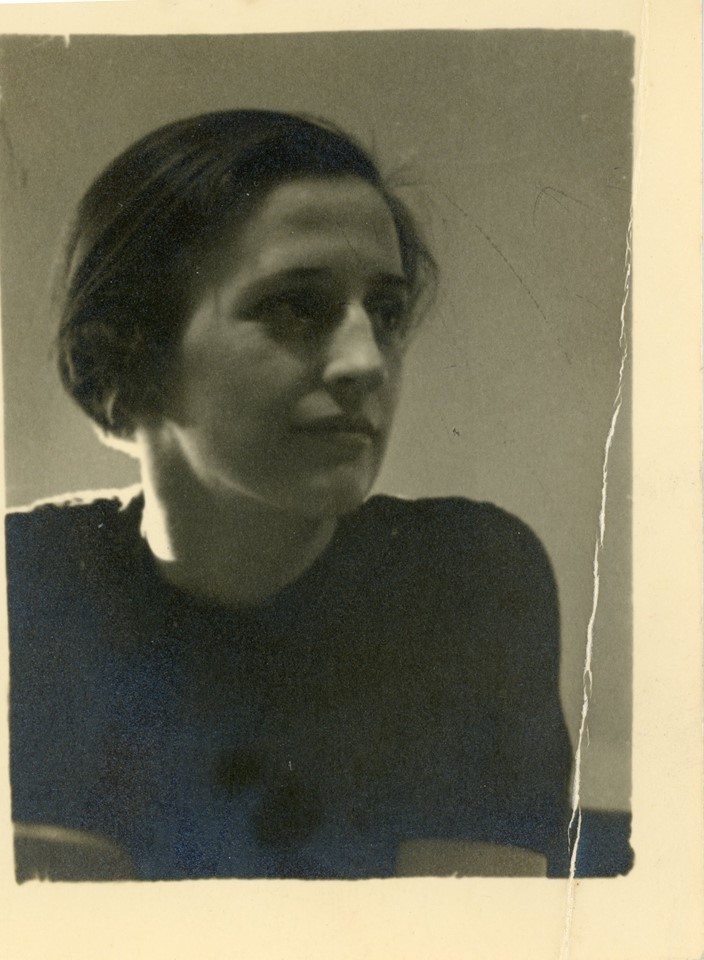Women in the Arts at the Union: The Past, Present and Future
When asked to name famous artists throughout history, names like Pablo Picasso, Shakespeare or Arthur Miller might come to the mind. However, missing from that list is the immense impact women have played in the arts for centuries. As the world kicks off Women’s History Month, we’re excited to look back at the Wisconsin Union’s own history, and share the tremendous influence women in art leadership roles have made, in the past and present.

Taylor (back right) stands with world-famous jazz singer Ella Fitzgerald, who performed at WUT several times.
In 1939, Fan Taylor stepped into her role as the first publicist of the Wisconsin Union Theater from 1939-1942 and the first director from 1946-1966, setting high standards for diversity and excellence in programming.
“What matters is not what kind of music you present—what matters is that what you present is the very best, and this band is the very best,” Taylor is credited with saying during her role as director.
WUT Assistant Director of Administration, Outreach and Development Heather Good said Taylor laid the groundwork for our current notions of diversity in performing arts by insisting on including women and minority artists in the field.
“[Taylor] was in many ways a woman ahead of her time—a woman working in a field dominated by men,” Good said. “We could have been just a po-dunk theater in a sleepy Midwestern town, but she put us on the map, culturally speaking.”
While simultaneously leading the Union Theater, Taylor extended her expertise in theater beyond Madison by becoming one of the lead founders of what’s now referred to as the Association of Performing Arts Professionals. UW-Madison originally housed the staff, with Taylor serving as executive secretary without compensation for much of her 24-year tenure. However, the curtain doesn’t close on women’s leadership in the arts at the Union Theater.
Taylor’s legacy lives on today at the Union through many facets, including the Fan Taylor Fund, which provides discounted theater tickets for UW-Madison students.
Just down the stairs in Wheelhouse Studios, another key leader’s impact can’t be missed—literally, her picture is framed on the wall. What started as a 1929 senior thesis for student Sally Owen (Marshall) would eventually leave an international legacy. Owen’s thesis called for an open art facility and craft shop for students, which was approved by the first director of the Wisconsin Union.
By 1930, Owen was the first director of the Union Workshop, now known as Wheelhouse Studios. This act sparked a movement when at one point more than 300 universities worldwide added open art studios to their student unions. She also designed the Hoofers’ emblem, and was the first woman to jump off the Hoofers’ ski jump.
“You’ve probably heard the Union is the living room of campus,” Wheelhouse Studio Director Jay Ekleberry said. “Well, if you have a neat living room space, then you need a messy room to make art in, too.”
While these exemplified women set a foundation for leadership in the arts, dozens more helped further that tradition to the present. Today, leaders like Robin Schmoldt embody what it truly means to be a strong arts leader. Schmoldt wears many hats at the Union, as the WUD Art and Film Committees advisor and art collection manager.
Schmoldt said one of the most enriching parts of her career, by far, is helping students equip skills to continue working in the arts post-graduation, or aiding them to translate their work in the arts to other fields.
Her work as the art collection manager exposed her to almost a century of contemporary, Wisconsin-based art, information she’s shared with art exhibits and organizations around the world. It’s absolutely important to have women in art leadership roles, Schmoldt said, paraphrasing a quote from Gloria Steinem that “women are half the talent of the human race.”
“Art can be a universal language to engage, educate, and transform society,” Schmoldt said. “But, that can only be an inclusive language when a diversity of identities are authentically represented, be that gender, race, ethnicity, culture, sexuality, socioeconomic status, or any of the myriad other human characteristics we each embody.”
From Taylor to Owen to Schmoldt, and every female arts leader in between, the Union is honored to play a role in celebrating women in the arts—and we’re excited to see what comes next.
Memorial Union: Celebrating 90 Years
Memorial Union opened in 1928. With the completion in 2017 of the first comprehensive building renovation, we’re celebrating the impact the people and programs have made on the living room of campus for the past 90 years. With a strong tradition of student-led programming and governance, the events and activities that develop within these walls remain relevant to the ever-changing expectations of our diverse student body.
The Wisconsin Union, the organization behind the union buildings, has connected students, faculty, staff, members and visitors through shared cultural, social and recreational experiences since it formed in 1907. Learn more: union.wisc.edu.


